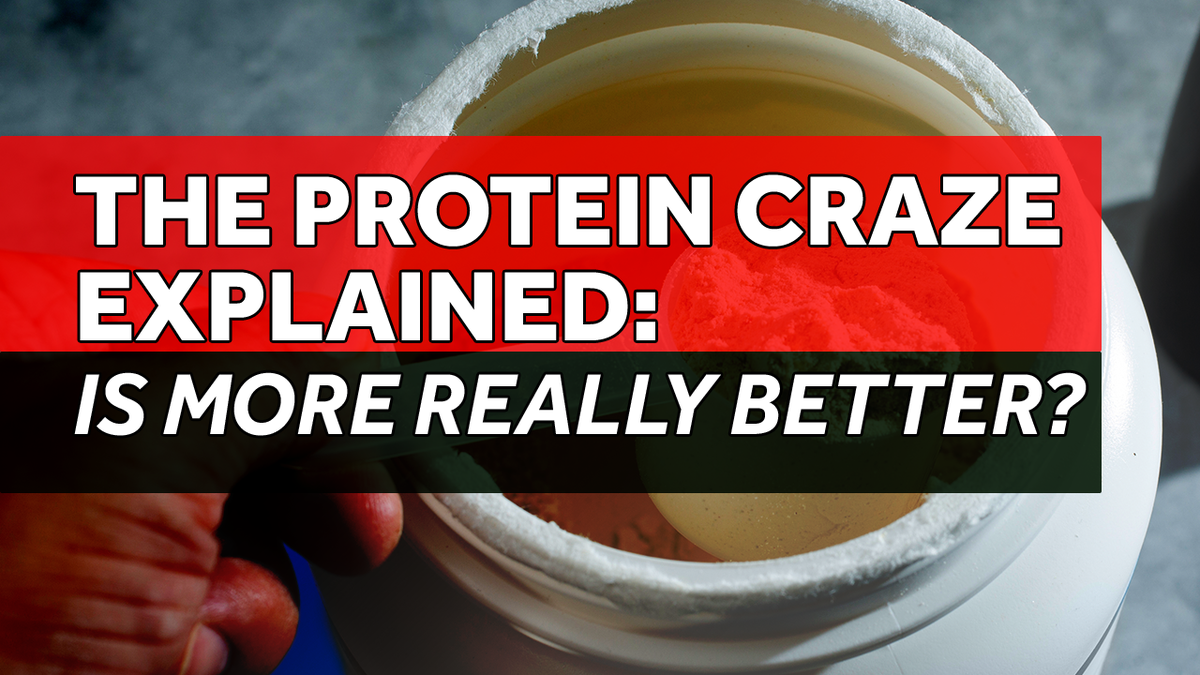If you’ve been in a grocery store or on social media recently, it’s no secret — we’re in the midst of a protein craze. We spoke with Good Housekeeping’s Nutrition Director and registered dietitian Stefani Sassos about the trend and what protein products are actually worth buying.So, why the buzz? Three factors contribute to protein’s popularity, said Sassos: the increase in use of GLP-1s and weight management; women in menopause and peri-menopause; and the influx of protein on social media. Protein has always been part of a healthy diet. Protein helps build and repair muscle, balance hormones and balance blood sugar levels. Recently, protein has popped up in unusual places — like popcorn, pasta, ice cream, candy and even Starbucks’ new Protein Cold Foam coffee. It may be tempting to add these flashy new items into your cart, but Sassos recommends looking at the ingredients list first to see if they’re minimal, whole foods.”Make sure it’s not crowding out fiber or other important nutrients that you should be getting into your diet,” Sassos said. “Protein doesn’t negate added sugar, so make sure you’re keeping the added sugar in your snacks or any of your packaged foods in check.” What protein-rich foods are worth buying?When looking for protein-rich foods, here’s a trick: you can keep a protein-to-calorie ratio of 10 grams of protein for every 100 to 150 calories. The best protein-rich foods are going to be lean meats like chicken breast, lean ground beef and fish. Dairy products like yogurt and cottage cheese are a great source of protein. For an extra protein boost, Sassos recommends skyr, an Icelandic soft cheese similar to yogurt, which has 17 grams of protein per serving.Plant-based protein foods like lentils, oats and peas provide a good amount of protein and fiber. How much protein do you actually need?For most people, the minimum daily Recommended Dietary Allowance (RDA) for protein is 0.36 grams of protein per pound of body weight.Use the calculator below to find out how much protein you need.Is it possible to eat too much protein? Sassos said excessive amounts of protein may have a negative impact on your health. Excessive protein could lead to issues with the kidneys, especially if you have preexisting renal issues. Another issue with high-protein diets is that people can lean heavily on highly processed meats like bacon or hot dogs. Focusing solely on protein could crowd out other valuable nutrients in your diet, like fiber and healthy fats. “Protein works incredibly in whole foods with the nutrient synergy of all the other vitamins and minerals and healthy fats inside it,” Sassos said. “So if you can have your protein in whole food form, not only is it going to be more beneficial, but you’re going to get this explosion in nutritional symphony.”
If you’ve been in a grocery store or on social media recently, it’s no secret — we’re in the midst of a protein craze.
We spoke with Good Housekeeping’s Nutrition Director and registered dietitian Stefani Sassos about the trend and what protein products are actually worth buying.
So, why the buzz?
Three factors contribute to protein’s popularity, said Sassos: the increase in use of GLP-1s and weight management; women in menopause and peri-menopause; and the influx of protein on social media.
Protein has always been part of a healthy diet. Protein helps build and repair muscle, balance hormones and balance blood sugar levels.
Recently, protein has popped up in unusual places — like popcorn, pasta, ice cream, candy and even Starbucks’ new Protein Cold Foam coffee.
It may be tempting to add these flashy new items into your cart, but Sassos recommends looking at the ingredients list first to see if they’re minimal, whole foods.
“Make sure it’s not crowding out fiber or other important nutrients that you should be getting into your diet,” Sassos said. “Protein doesn’t negate added sugar, so make sure you’re keeping the added sugar in your snacks or any of your packaged foods in check.”
What protein-rich foods are worth buying?
When looking for protein-rich foods, here’s a trick: you can keep a protein-to-calorie ratio of 10 grams of protein for every 100 to 150 calories.
The best protein-rich foods are going to be lean meats like chicken breast, lean ground beef and fish.
Dairy products like yogurt and cottage cheese are a great source of protein. For an extra protein boost, Sassos recommends skyr, an Icelandic soft cheese similar to yogurt, which has 17 grams of protein per serving.
Plant-based protein foods like lentils, oats and peas provide a good amount of protein and fiber.
How much protein do you actually need?
For most people, the minimum daily Recommended Dietary Allowance (RDA) for protein is 0.36 grams of protein per pound of body weight.
Use the calculator below to find out how much protein you need.
Is it possible to eat too much protein?
Sassos said excessive amounts of protein may have a negative impact on your health. Excessive protein could lead to issues with the kidneys, especially if you have preexisting renal issues.
Another issue with high-protein diets is that people can lean heavily on highly processed meats like bacon or hot dogs.
Focusing solely on protein could crowd out other valuable nutrients in your diet, like fiber and healthy fats.
“Protein works incredibly in whole foods with the nutrient synergy of all the other vitamins and minerals and healthy fats inside it,” Sassos said. “So if you can have your protein in whole food form, not only is it going to be more beneficial, but you’re going to get this explosion in nutritional symphony.”

